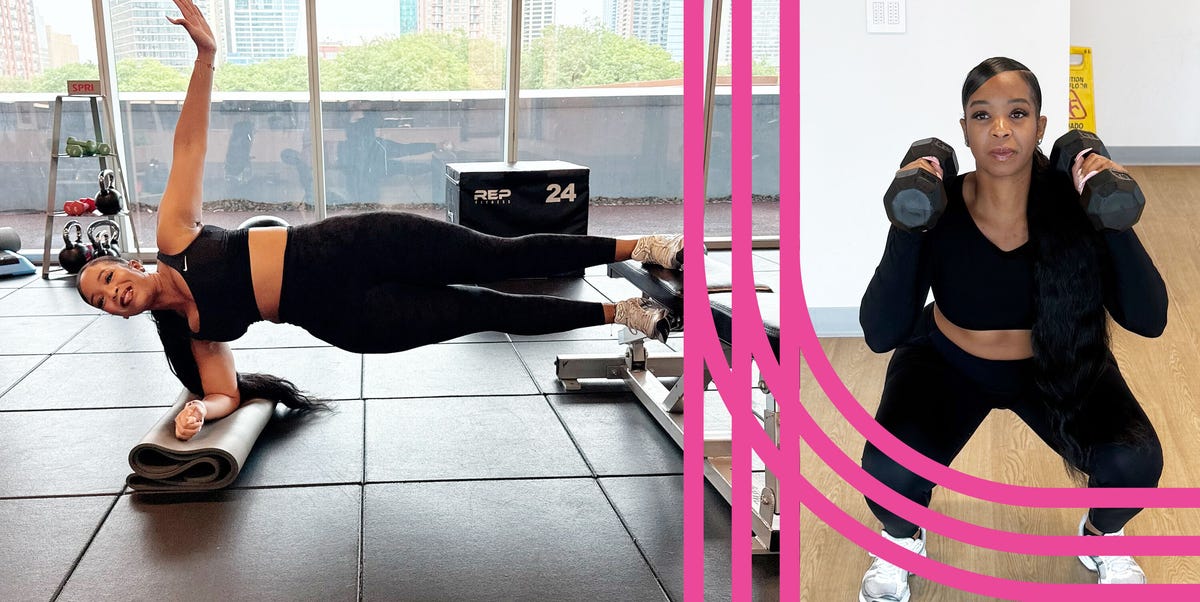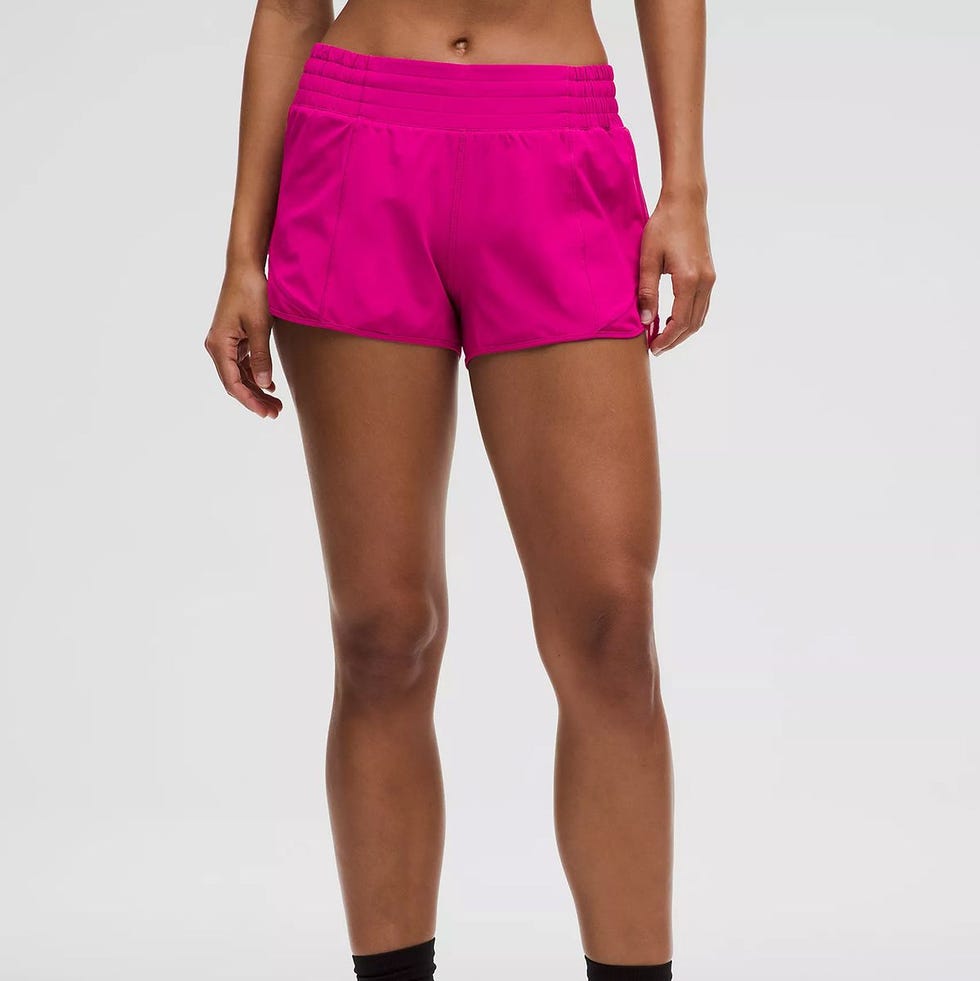As a passionate and proud fitness coach, certified personal trainer, and mom, I know firsthand that working out isn’t all about sculpted muscles—it’s about building strength from the inside out. I experienced that mindset shift firsthand. After battling postpartum depression and anxiety, movement became my therapy, my safe space and my way back to myself. Now, I’ve made it my mission to help women (especially moms and caregivers) build stronger bodies and even stronger minds.
I train five to six days a week through strength training and cardio, and my core routine is usually functional, focused, and straight to the point. You can catch me doing planks, crunches, Russian twists, and mountain climbers. I’m not chasing the six-pack dream—I’m building the kind of strength that supports me in every part of life and helps me feel more grounded, confident, and mentally and physically in control. This strength helps me teach my daughter proper workout form now that she’s into sports, keep up with the demands of running my business, and carry out functional everyday movements.
Through it all, I’m always looking for fresh new ways to challenge both my body and mind. So, I decided to add the Copenhagen plank into my routine, since I’d never tried it before and core strength and function is always of the utmost importance to me.
The Copenhagen plank is not your typical core move—it’s a side plank variation where you put your top calf on an elevated surface, like a bench. So not only does it fire up your abs, but it also works your inner thighs, glutes, and stabilizer muscles, which support and hold your body steady during movement. A well-worth-it challenge!
Here’s how I integrated the Copenhagen plank into my workouts almost every day, and all of the changes I noticed after the month-long challenge.
How I Added The Copenhagen Plank Into My Routine
My routine consists of four strength training days, one active recovery day, and one light cardio day. For my cardio, I’m usually hitting the Stairmaster or doing an incline walk.
Here’s what my typical weekly split looks like:
Monday: Lower body strength (55 minutes) and cardio (20 minutes)
Tuesday: Upper body strength (45 minutes) and cardio (20 minutes)
Wednesday: Active recovery, like pilates or walking (60 minutes)
Thursday: Full body strength (55 minutes) and cardio (20 minutes)
Friday: Glute strength (40 minutes), core strength (10 minutes), and cardio (20 minutes)
Saturday: Active rest, like light cardio or a walk (30 to 60 minutes)
Sunday: Rest day
With all of this in mind, I decided to sprinkle in Copenhagen planks daily, even on rest days. I started with three sets of 20-second holds on each side, adding 5 to 10 seconds each week. So, by the fourth week, I was holding three sets for 45 seconds each. On training days, I added them at the end of my sessions right before cardio so my stabilizers fired at full force, but I didn’t burn out so early that I couldn’t finish my workout routine.
At the start of my experiment, I could barely hold a Copenhagen plank, so I modified.
The Copenhagen plank is no joke! I thought the move would be way easier, but at first, I could barely hold the position for more than 15 seconds without my hips dropping and my body shaking and eventually collapsing. I was surprised at how the Copenhagen plank activated muscles I clearly hadn’t been targeting enough—my inner thighs, glutes, obliques, and deep core—even with all my lower body training.
So, I started with a bent-knee variation, adding it to my post-workout routine four to five times a week, and it instantly made a difference: The modified move took some pressure off my hips and let me focus on nailing my form without all of the shaking. This tweak made the exercise still feel challenging, but not unbearable to get through.
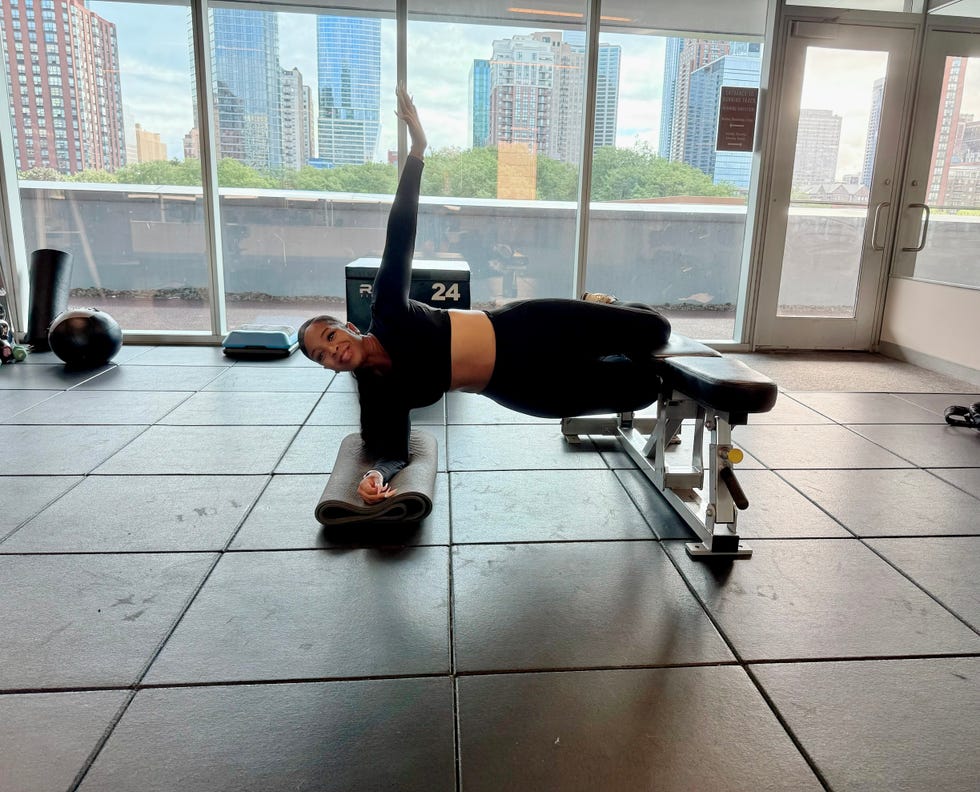
Courtesy of Tonyael Miller
The day after my first Copenhagen plank, my legs were trembling like I just did a 90-minute spin class. My adductors were sore in ways I’d never felt before, and even sitting down felt like a core workout because my abs were working to hold my body up.
After the first week, I felt stronger not only physically, but also mentally.
I noticed I had better hip stability and less knee discomfort during leg workouts. My core also felt more engaged during everyday movements, and even my posture improved—I wasn’t slouching as much by the end of the day like normal. Adding the Copenhagen plank to my routine also helped me feel more connected to my body, especially in exercises that require balance and control.
I felt myself growing stronger mentally, too: I had to be fully present during the plank with no distractions. It was just me focusing on my breath and form while staying in the position. Doing this exercise became a moment of mindfulness that helped quiet my thoughts and build mental resilience, giving me a sense of accomplishment on days when life felt chaotic.
Related Stories
Just five to six minutes of this intentional work made a big difference in how I showed up for myself: Even on days I felt tired or overwhelmed, I still committed to doing my planks. That small act of discipline built my confidence and carried over into other areas of my life, like how I approached tough conversations or stuck to my routines.
Over time, the Copenhagen plank became less of a workout, and more of a ritual. At first, I just wanted to get stronger, but it turned into a way to reset mentally, reflect, and release stress. So, I eventually started adding another round of planks at night during the second week to end the day with intention by focusing on my breath and form, which helped me feel more grounded.
By week three, I saw visible improvements in my strength.
I was able to hold the standard Copenhagen plank without modifications for three sets of 45 seconds on each side without collapsing. My form had improved dramatically. I also felt more stable when I did everyday movements: Each time I did squats, lunges, or even walked up stairs, my balance improved and my core felt more supported. Plus, I saw improvements in my abs definition because of all of the planking.
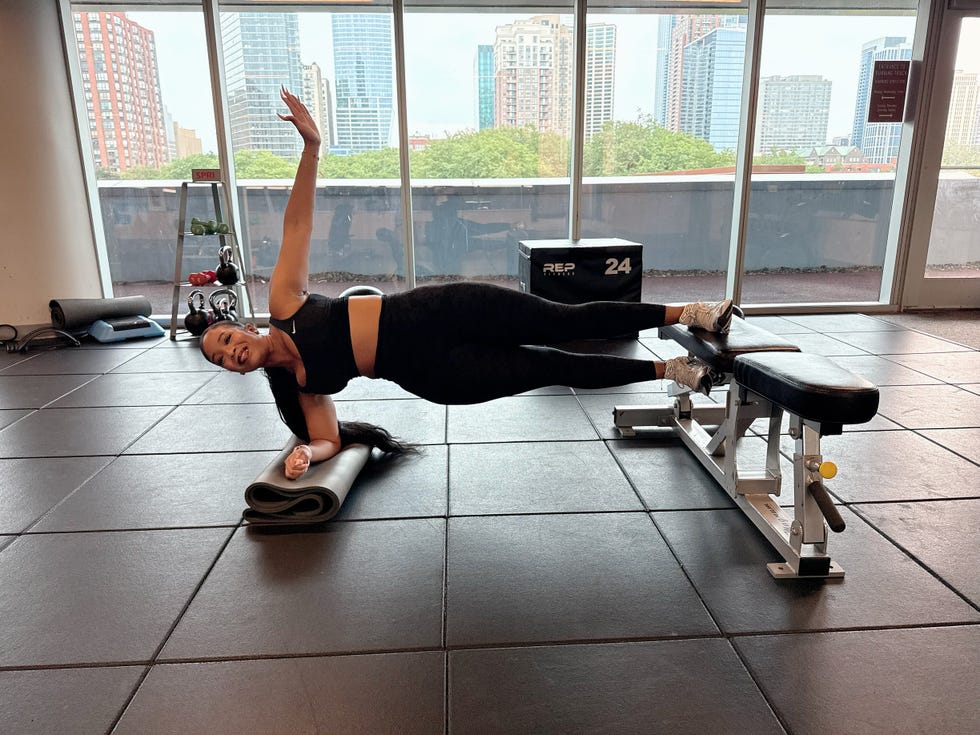
Courtesy of Tonyael Miller
There was also something empowering about mastering a move that once felt impossible. Every time I watched myself in the mirror, shaking but holding on, it reminded me of everything I preach to my clients about how small, consistent actions lead to big change. And that was proven in this journey: I went from barely being able to do a Copenhagen plank, to holding one for nearly a minute on both sides multiple times.
My 3 Biggest Takeaways From Doing Copenhagen Planks For A Month1. It’s important to prioritize moves that work multiple muscle groups.
The Copenhagen plank was just what I needed to show me how interconnected our muscles are. My adductors, glutes, obliques, and even shoulders had to work together just to hold the plank. Once those muscles got stronger, I started to feel the difference in tons of other movements: better control in squats, more power in push-ups, and even better balance just walking up stairs. I’ll definitely be adding more moves that hit multiple muscles at once into my routine to make my whole body feel more supported and stronger.
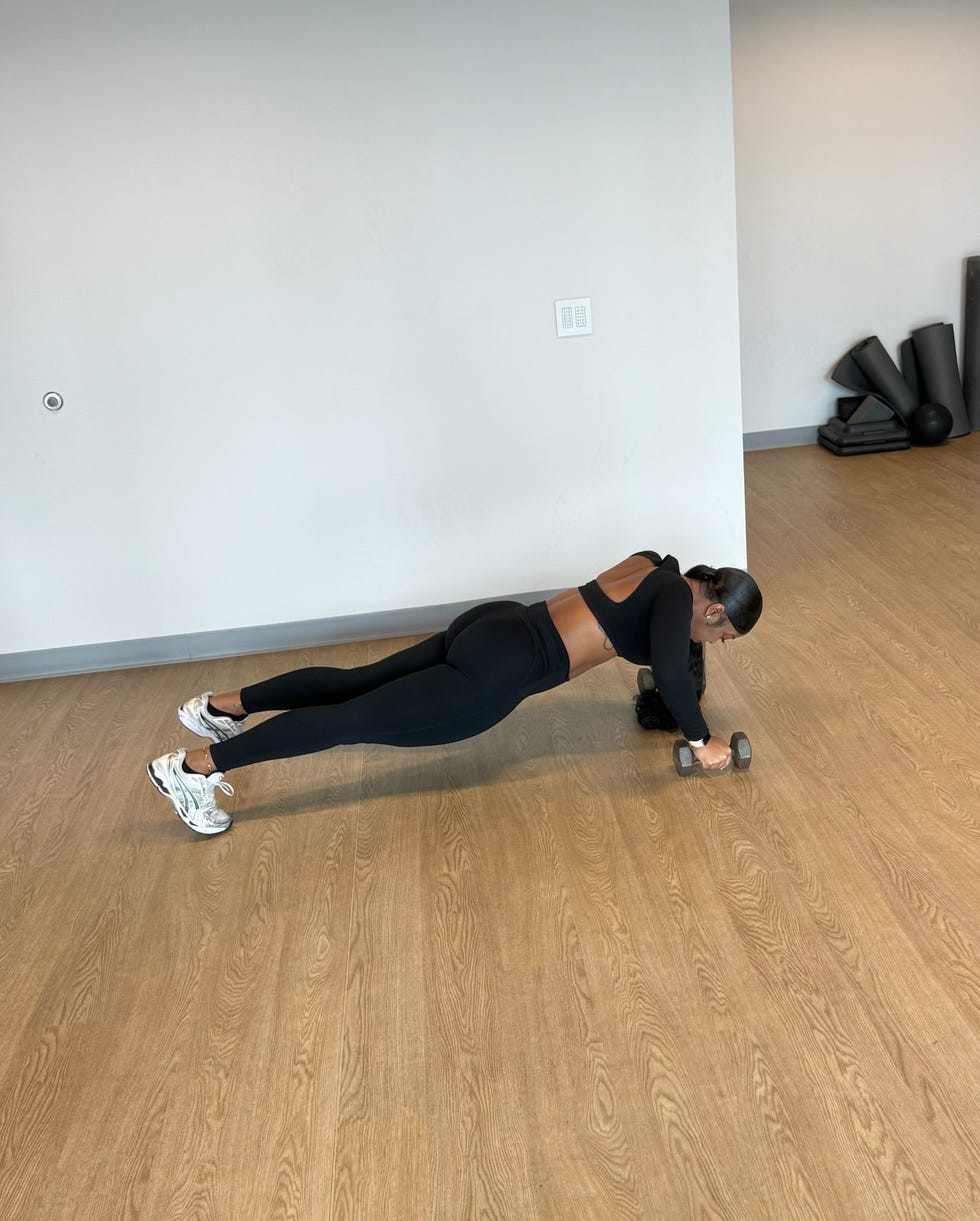
Courtesy of Tonyael Miller
2. Small, consistent actions lead to big results.
Some days, I didn’t feel like adding one more move to my workouts when I already had a full plate if I was tired, mentally drained, or just juggling too much. But I reminded myself that my plank didn’t have to be perfect or long—it just had to get done, even if I had to modify the move.
Best Workout Shorts
Best Workout Top
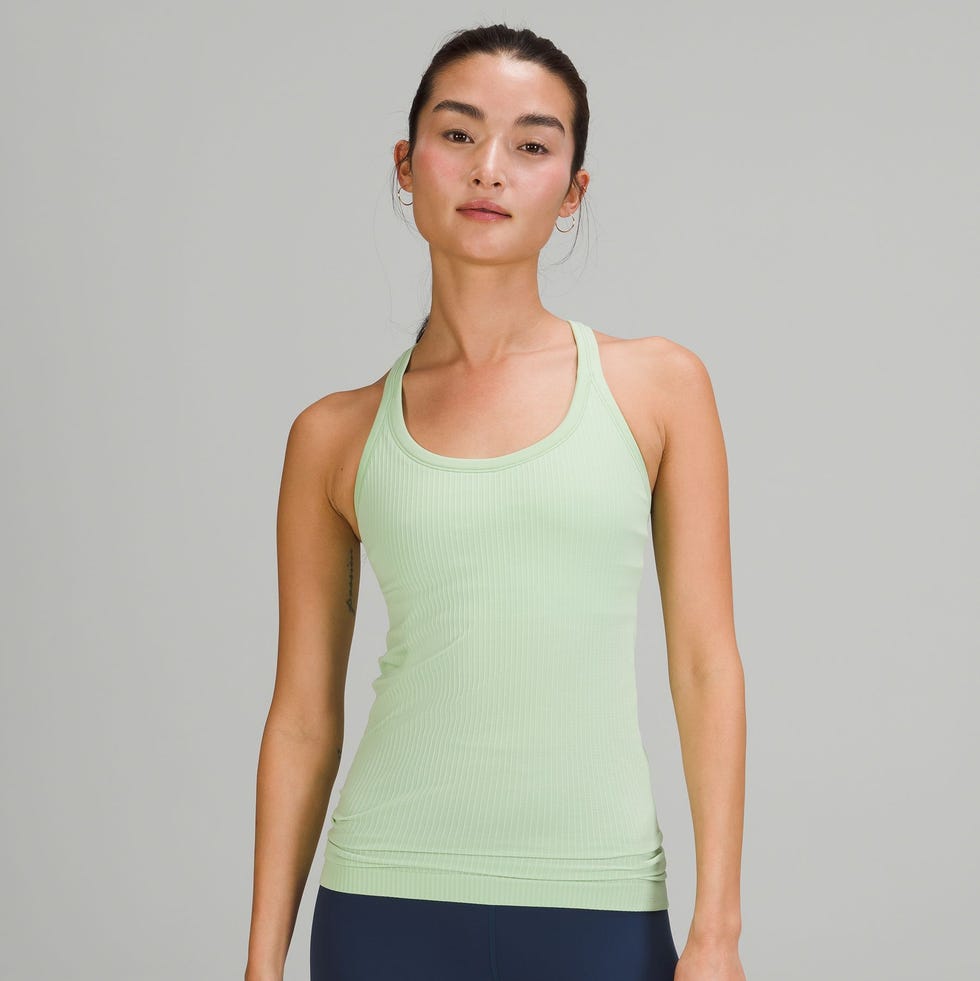 lululemon Ebb to Street Tank Top
lululemon Ebb to Street Tank Top
Best Sports Bra
 Under Armour Infinity High Impact Sports Bra
Under Armour Infinity High Impact Sports Bra
Now 10% Off
Keeping that small promise to myself built more discipline than I expected. It also reminded me of the power in showing up for myself in small ways; I built trust with myself and that trust turned into confidence. In my own life, I started speaking up more, setting boundaries, and following through on things I’d usually put off. Fitness always reminds me that if I can stay consistent with something hard, I can carry that same energy into other areas of my life.
3. Strength is a mindset.
The first time I tried this move, I wanted to quit because it was so hard, but I didn’t. I had to tell myself the same things I tell my clients: Working out is not about perfection, it’s about staying consistent, which leads to progress. I was so proud of myself for not giving up because by the end of the challenge, I could see my strength, but more importantly, I believed in it. That mindset shift was everything.
Related StoriesI’ll definitely keep Copenhagen planks in my routine—and introduce the move to my clients.
I probably won’t do them every day, but I’ll incorporate them into my lower body and core training at least twice a week because they activate deep stabilizing muscles that most traditional ab exercises miss, teach body awareness, and build joint stability. They’re also great as a finisher or even during mobility-focused days to improve strength and control.
Change your body composition with our exclusive strength training guide
If you’re looking for a move that’ll fire up your core, challenge your mental focus, and teach you something about yourself along the way, then you definitely need to try the Copenhagen plank. Trust me, your mind and body will thank you.
Tonyael Miller is an author, certified Personal Trainer, wellness curator, and mental health advocate. She is the founder of Tonyael Miller Fitness, where she creates programs that help moms and caregivers decrease depression, boost confidence, and reclaim their joy through fitness and nutrition. After overcoming postpartum depression herself, Tonyael developed Mentally Fit 2.0, an eight-week program that integrates physical training with mental wellness support.
In addition to coaching women worldwide, she has modeled for major fitness brands, competed in bodybuilding, and was selected as a trainer for the Strength in Diversity program with Women’s Health and Men’s Health for the class of 2024.
